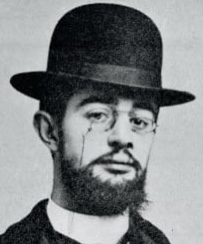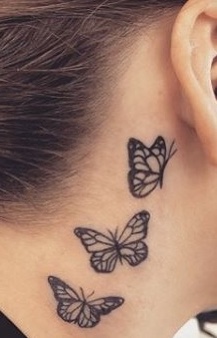An art teacher has done a lesson on the power of observation a hundred times…until one student opens her eyes.
What I’m Writing This Week
Today’s story is inspired by an old, old (worn out?) joke and by an interview I did years back with Georgia Packard, a cinematographer who was taught by Ansel Adams. I hope you enjoy the story.
Losing Maxine
Bob Gillen
Students slipped in the classroom door just as the bell rang down the hall. Maria Santana turned to Grace Medford. “Ready?”
Grace nodded. “I’ve done this lesson a hundred times. Let’s do it.”
The two women stepped into the classroom. Sixteen heads turned to gaze at the stranger carrying a cardboard box.
“Let’s focus, class,” Maria said. “Today’s lesson will be fun.”
The high school juniors dumped backpacks on the floor, settled into their seats.
“I want to introduce Ms. Grace Medford to you. She is a friend and a fellow creative arts professional.” Maria gestured to the class. “Grace, this is my class. Sixteen students hungry for art.”
“Good morning,” Grace addressed the class. “I’m happy to be here, happy to meet the class my friend talks so much about.”
“Any of it good?” a boy piped up from the side of the room.
Grace said, “Yes, all of it good…although I don’t recall her mentioning you.”
“Woot,” a girl behind the boy said, as his face turned red.
Grace jumped in. “I’m teasing you. What’s your name?”
The boy said, “Mark.”
Maria slipped to the back of the classroom as Grace took over. “Mark, how’s your knowledge of art history?”
Mark perked up. “Pretty good. I read a lot of it.”
“Okay. Here’s a question for you. You know of the French painter Toulouse-Lautrec?”
“Sure, the Moulin Rouge paintings.”
“Mark, do you know how he got his name?”
Mark’s brows wrinkled. He shook his head.
“Anybody?” Grace called out to the class.
Silence.
“Okay, here’s a bit of art history you won’t learn in books. When Lautrec was a young teenager…maybe your age… most of his clothes were worn and faded.”
Grace looked around the class. “Still with me?”
Lots of nods.
“Lautrec’s mother was not much of a seamstress. She took her son to a tailor. The tailor looked Lautrec up and down, pulled a pair of pants off a shelf, and had him try them on. Lautrec pulled the pants up. The tailor told him, hold out your arms. I want to see how they fit.”
The class peered at Grace.
“So…Lautrec lifted his arms…and the pants fell down around his ankles. The tailor looked at the pants, looked at Lautrec, and said, ‘What’s the matter, Lautrec, too loose?”
Silence for a second. Then a groan from a girl in the front seat. Two more groans. A few students shook their heads.
“What, you don’t believe me?” Grace said.
Mark said, “That was really bad.”
Grace smiled. “Remember, you heard it first here.”
More heads shook.
“All right, let’s get serious. Mrs. Santana invited me here to talk about art and the power of observation.” She reached down and picked up the cardboard box, set it on a small paint-stained table.
“What’s in the box…a head?” one girl asked.
Grace pointed at the girl. “As a matter of fact, yes.”
She lifted the lid and pulled out a mannequin head. She turned the box upside down, set the head on the box, a right-side profile facing the class.
“This is Maxine.”
Maxine featured a smooth alabaster complexion, subdued makeup, a couple of barettes in her curly dark hair.
“Let’s see what kind of sketching you can do,” Grace said. “Please study Maxine’s profile and sketch her. I’m not looking for a finished sketch. Highlight any features that appeal to you. Give me a snapshot of what you see.”
The students’ pencils scratched as they put on paper what they observed. Grace walked around the room, glancing at each sketch.
Grace stopped their work. “That’s enough time to capture an impression. Anyone want to share?”
A hand went up in the back. Grace waved the boy forward. He held up his sketch, moved it around so everyone could see it.
“You are…?” Grace asked.
“Eric.”
“Thanks, Eric. Any comments from the class?”
One girl said, “I like the way he captured the flow of her hair against her head. What I see first is a woman with really cool curly hair.”
“Yeah,” a boy said. “It’s kind of sexy how her hair flows down.”
A couple of girls grimaced.
“No…we’re talking about observation here,” Grace said. “That’s what he sees.”
Several other students shared their sketches as well.
Grace said, “You all know the photographer Ansel Adams, right?”
Heads nodded.
“Adams was a believer in observation. When he prepared to photograph a subject, he studied it carefully. He walked around it. Peered closely at its features. Studied the light.”
More nods.
“Look at Maxine again.” She stepped aside so all the class could see the mannequin head clearly.
“I asked you to sketch what you saw – a side profile. I did not give you an opportunity to study her completely.”
Grace turned the pedestal, box and mannequin to face the window.
“I want you now to stand up and walk around Maxine. Study her fully. Observe light and shadow. Look for features you did not see before. Bring your paper and pencil if you wish.”
Grace gestured and the students got up to walk around their subject.
“Please observe in silence. I would prefer you see what you see, not what someone else may notice.”
Students studied, sketched, wrote notes.
“Go back to your seats now and sketch a fuller impression of Maxine. I’ll give you fifteen minutes.”
After Grace wandered around observing their work, she asked them to stop.
“Anyone want to share?”
A girl came forward. Held up her paper. She had captured a forward profile of Maxine, the flow of hair to one side, a high fade on the other, a single earring to the left side. In her sketch the earring caught the light from the window.
“Good detail. Anyone else?”
Another student displayed a close-up sketch of Maxine’s left side, where three tiny butterfly tattoos could be seen behind her ear.
More students shared their sketches. Grace smiled. “You all get it. I can see that from your sketches. If you had limited yourself to your initial view of Maxine, her right-side profile, you would have done a decent study. But by walking around, studying all angles and lighting, you produced work with greater depth. Greater interest.”
A hand went up. Grace acknowledged the student. “You are?”
“I’m Morgan.”
We’re all missing something.
“Okay, Morgan.”
“You’re talking to us about observation, but I think we’re all missing something.”
Grace nodded. “Talk to me.”
“I see Maxine’s pain.”
Grace turned to look at the mannequin head. “How so?”
“You keep referring to Maxine as she and her…”
Grace squinted.
“Maxine could be they/them. Maxine could be different from what we see on the surface.”
Grace looked at the student. “Morgan, what are you seeing here?”
Morgan stood, hesitated, stepped up to the mannequin. Lifted it to face the class. “I see someone with one earring. Not usual for a girl. I see butterfly tattoos tucked behind the ear. Visible…but not obvious.”
“Yes. We see that too,” Grace said.
“But they speak to me of pain…and of courage. The earring and tattoos are on the side of their head with the fade. They can easily be seen. There’s no earring or tattoos on the side with all the curly hair.”
Grace stared at Maxine.
Morgan set the head back on the table. A girl from a side seat stepped forward, her smartphone extended. “Cool. I want a picture of Maxine.”
Grace continued to stare at Maxine. “I started the lecture with a weak attempt at humor, but I did not anticipate closing here. Observing difference in our subject.”
Grace spoke to Maria. “I applaud your class. If Maxine could speak, she…they… would thank you for truly seeing them.”
Grace placed the mannequin head back in the box, closed the lid. She turned to Morgan, smiled. “From here forward Maxine’s name will be Morgan.”
***


Recent Comments